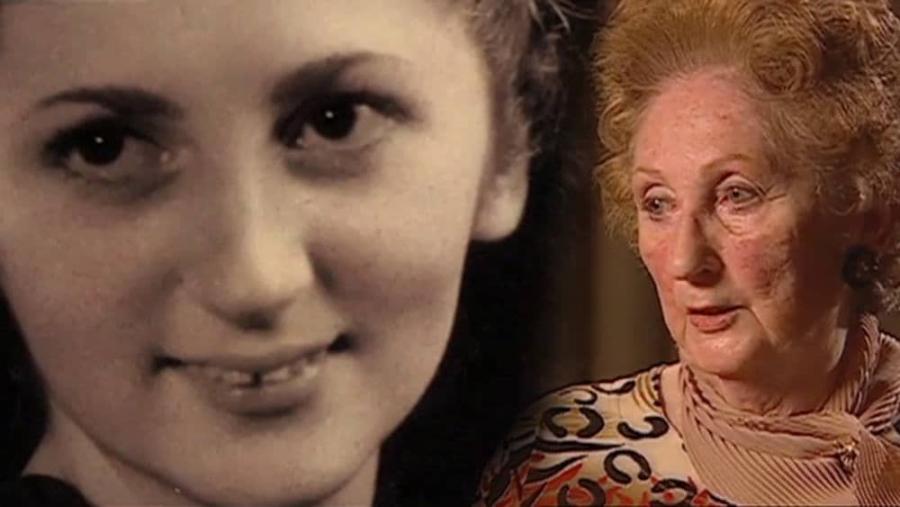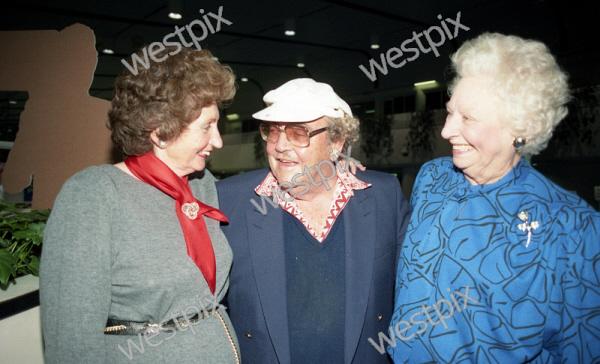“Little Bet you helped save my life”: An unlikely friendship formed in the horrors of war

Edie Leembruggen. Photo credit: Nurseslab.
Fifteen-year-old Edith “Edie” Cynthia Rose Leembruggen (née Kenneison) first met Australian nurse Vivian Bullwinkel in a prisoner of war camp on Banka Island in February 1942. Their friendship would help them survive years in captivity and become the basis of a lifelong bond.
Edie was born on 26 November 1927 at Batu Caves, Kuala Lumpur, Malaya. When the Japanese invaded Malaya in 1942, Edie was taken to Singapore by her grandfather and step-grandmother, in the hope of travelling onwards to England.
On 12 February, while waiting to board HMS Giang Bee, bombs started falling around Keppel Harbour. The Japanese raid caused chaos among the thousands trying to evacuate the island. After boarding the heavily overloaded Giang Bee, Eddie recalled looking back to see “Singapore ablaze with flames reaching skyward [and] people still left on the docks”.
Fires caused by Japanese bombings on Keppel Harbour, Singapore, February 1942.
Giang Bee travelled in a convoy with four ships, including SS Vyner Brooke. The following day, Japanese planes flew overhead and started bombing the ships. One bomb caused the engines of the Giang Bee to cease. Edie held her grandfather’s hand as the panicking passengers pushed them towards the railing, but she became separated from her grandfather. She would never see him again.
Edie was thrown into the water and picked up by a lifeboat. Fifty-six survivors drifted on the small vessel for two days without food or water. On 15 February, they landed on a beach in Banka Island. Some Malayan locals shared food and clothes with the survivors, who remained on the beach for a week before the Japanese came and took them as prisoners.
Edie was placed in Muntok jail on Banka Island. Every day, she would wait at the front gate hoping to see her grandfather walk in. One day, Edie saw Australian nurse Vivian Bullwinkel enter the camp. Her arrival created excitement among the prisoners.
Studio portrait of Staff Nurse Vivian Bullwinkel, May 1941. Photograph by F.B. Mendelssohn and Company.
Vivian Bullwinkel had served with the 2/13th Australian General Hospital before being ordered to evacuate Singapore. On the same day Edie boarded Giang Bee, Vivian and 65 other nurses boarded Vyner Brooke. Two days later, Vyner Brooke was sunk by Japanese aircraft during the same raid that sunk Giang Bee. After days in the water, Vivian found herself on Radji Beach, Banka Island, alongside 21 nurses and a group of men, women and children. Following their surrender, Japanese soldiers killed the men and then ordered the women to walk into the sea before open firing on them. Vivian was shot, but laid in the water pretending to be dead until she was certain they had left. Having made her way out of the water, she found a British soldier who had also survived the massacre. The pair hid for 12 days before deciding to surrender. After surrendering, Vivian was taken by Japanese soldiers to the gates of Muntok jail.
Edie and Vivian met after the prisoners were moved to a camp in Palembang, Sumatra. Edie’s head was covered in sores caused by sand-fly bites and her step-grandmother believed it would be best to bath her head in boiling water. Hearing Edie scream, Vivian entered and put a stop to this treatment. When she took Edie out of the room and asked for her name, Edie responded with “Bet”: a name she believed sounded strong. Vivian would continue to call her “Little Bet”. Edie idolised Vivian, seeing in her a woman who was always calm, radiant and willing to help, and recalled that Vivian was “very caring and made me her responsibility in a way”. Even though they were both experiencing the deprivations of camp life, the two spent time together and looked out for each other.
A handmade mahjong set. Prisoners would often play board games in the camps.
When Edie contracted dysentery, Vivian cared for her in the hospital hut. As Edie recovered, she realised that Vivian had stopped coming. Australian nurse Wilma Oram told Edie that Vivian had become ill and could die if limes (used to treat severe diarrhoea) could not be found. Edie approached a guard and arranged to trade a gold bracelet she had kept hidden in exchange for limes. The guard returned the next morning with the limes. Vivian recovered and later told Edie, “Little Bet you helped save my life”.
The inside of a hut occupied by Australian nurses in the Palembang prisoner of war camp, Pat Gunther, c. 1943, pencil on paper.
The announcement of the end of the war was met with shocked silence in the camp; no one knew what would happen next. On 18 September 1945, the prisoners were flown to Singapore. Civilian prisoners were lodged in Raffles Hotel, where Edie spent hours looking in the mirror trying to process her reflection. Having not looked in a mirror for years, she did not recognise herself. She also did not recognise her own mother after the war and found adjusting to post-war life difficult. Sent to Singapore for schooling, she became a teacher, won a scholarship to America and attended the New York State Teacher College. In 1960, Edie moved to Western Australia. She regularly visited Vivian, attended her wedding, and they remained close friends. She recalled Vivian even calling her “Little Bet” when she was 70 years old. Edie remembered that Vivian “had this wide grin … always had a big smile on her face irrespective of her situations. She was really very special”. Edie died on 2 October 2008.

From left to right: Edie, Jake Jacobs (who liberated Edie and Vivian from the prisoner of war camp in Sumatra in 1945), and Vivian at Perth airport, 1992. Photograph by Joe Wheeler, Westpix.



